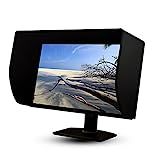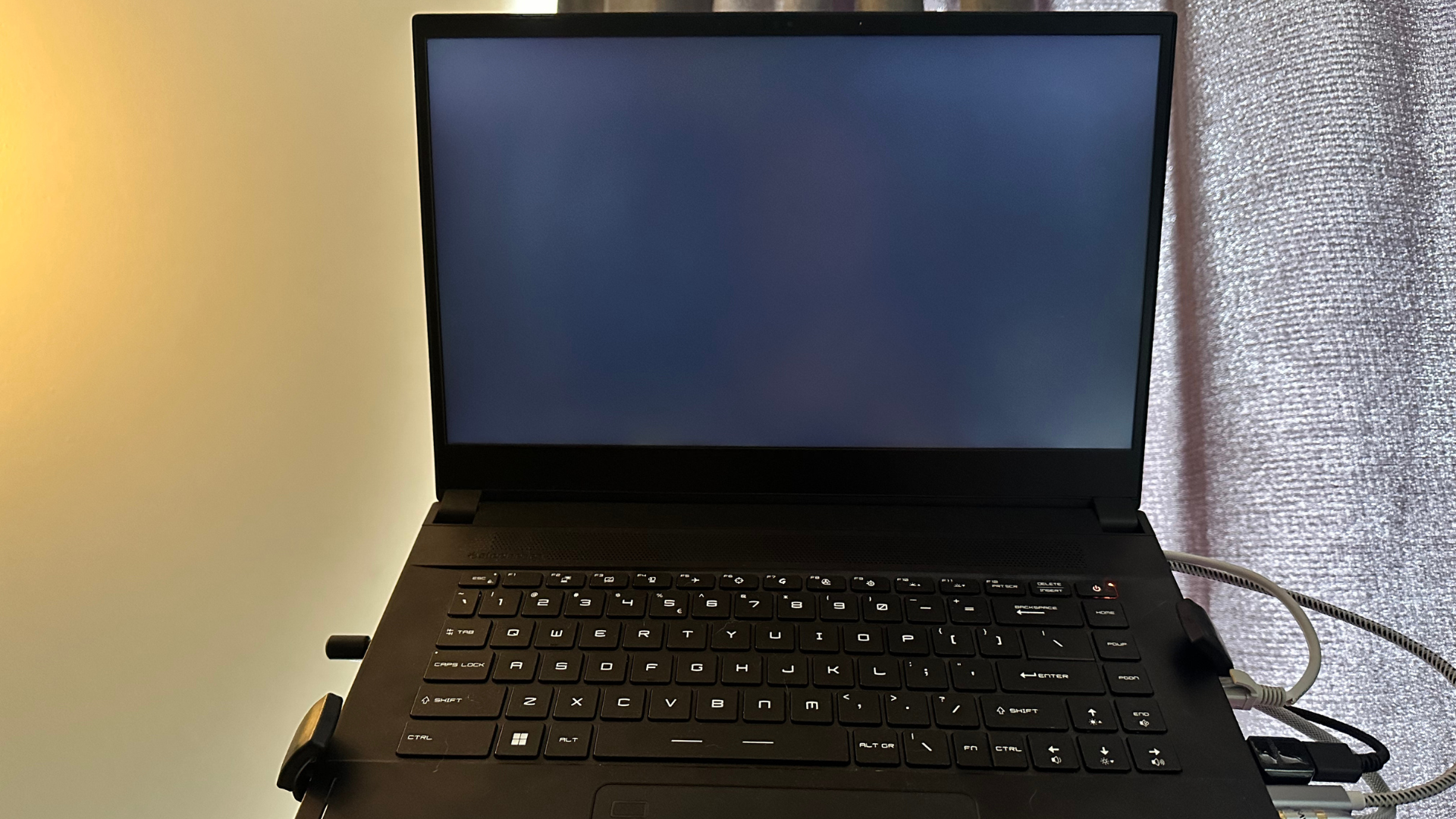Quick Links
Computer monitors with IPS screens offer the best color accuracy, wide viewing angles, high contrast rations, and these days fast refresh rates and response times---all at much saner prices than OLED technology. They sound great, until you experience that dreaded IPS glow.
What Is IPS Glow?
IPS glow happens when light from your monitor's backlight reflects off the internal surfaces of your display panel and into your eyes. This can cause parts of your screen to look brighter than they should, especially in dark environments. IPS glow is most noticeable when viewing dark content or when you're sitting close to your monitor.
IPS Glow or Backlight Bleed: Spotting the Difference
While IPS glow is often confused with backlight bleed, the two are actually different issues. The nature of the IPS technology causes IPS glow and is there even when the monitor displays a completely black image.
Backlight bleed, conversely, is a defect that occurs when light leaks through the edges of your monitor's panel, creating bright spots or streaks in areas of your display. To spot the difference, you can perform an IPS glow test.
Performing an IPS Glow Test
To test for IPS glow, display an entirely black image on your monitor (a website like blackscreen.app is handy, just double-click it to go to full screen) and darken your room as much as possible. If you notice brighter areas on your screen than others, you're experiencing IPS glow. If the bright spots are only visible when the screen displays a bright image, you're likely experiencing backlight bleed.
With backlight bleed, turning the brightness or backlight settings down to zero should virtually eliminate the bright streaks of backlight bleed. IPS glow will still be visible however, even when the backlight is quite low, although it may be diminished.
The amount of IPS glow varies between different models of screen, and even between individual units of the same model. As mentioned above, IPS glow is a normal part of the technology, but here are some ways you can reduce it.
Fix 1: Adjust Your Viewing Angle
One of the most effective ways to reduce IPS glow is to adjust your viewing angle. Tilting your monitor slightly away from you can help minimize the light reflecting off your display panel's internal surfaces. Experiment with the tilt angle of your monitor to find the sweet spot that reduces IPS glow without sacrificing viewing comfort.
Fix 2: Tweak Your Screen Brightness, Gamma, and Contrast
Adjusting your monitor's brightness, gamma, and contrast settings can also help reduce IPS glow. Reducing the overall brightness of your monitor can make IPS glow less noticeably, and adjusting the gamma and contrast can help improve the visibility of dark scenes if the glow is obscuring detail. Play around with these settings until you find a balance that works for you.
Fix 3: Change Your Ambient Lighting
You can reduce IPS glow by making changes to your ambient lighting. IPS glow is more apparent the dimmer your ambient lighting is, so by turning up the lights in the room, you can reduce how visible the glow is to your eye. However, you risk glare the brighter you make the room, so finding a balance is important, especially if your IPS monitor does not have an anti-glare coating.
You might also consider using a monitor hood. Many professionals use these hoods to ensure that they see the correct color and brightness on their screens, and it can prevent glare from external light sources if you turn up your ambient light to combat IPS glow.

iLooker 27E 27 inch LCD LED Video Monitor Hood
An affordable monitor hood for the common 27-inch monitor size.
Fix 4: Calibrate Your Monitor
Calibrating your monitor can help reduce IPS glow and improve your general viewing experience. Windows and macOS have display calibration tools built in that can help you adjust your monitor's settings to achieve a better balance of brightness, contrast, and color accuracy. Free tools are available online, too, if you're using another operating system.
You can also buy a color calibration tool and do it yourself, although these can be moderately expensive.

Datacolor SpyderX Pro
One of the most affordable tools to calibrate any computer monitor in minutes.
Fix 5: Use Bias Lightning
Bias lighting is a technique that involves placing a light source behind your monitor to reduce eye strain and improve the visibility of dark scenes. By illuminating the wall behind your monitor, you can help reduce the contrast between your monitor and the surrounding environment, which can help minimize the effects of IPS glow.

